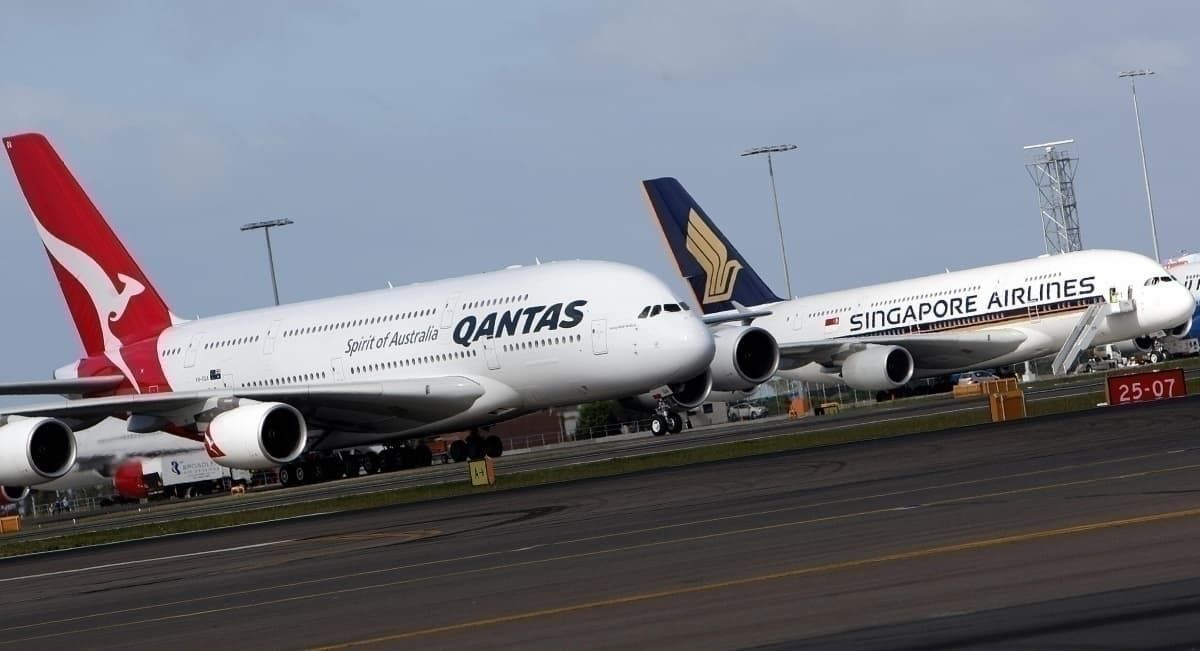Footage has emerged online of aircraft parked at Manila Airport coated in volcanic ash. The Philippine city has been on high alert for more than 24 hours now, as earthquakes and eruptions of ash and steam have suggested that volcano Taal is on the verge of an eruption.
Qantas and SIA get an ash bath
Following the eruption of ash and steam from the Taal volcano in Manila, videos have surfaced online of some commercial aircraft plastered in ash.
Workers could be seen washing down a Singapore Airlines aircraft to remove all the volcanic ash from the fuselage. Black ash could clearly be seen over the top of the fuselage and wings, and covering the radome on top of the tube.
Nearby, a Qantas aircraft can be seen dusted with volcanic ash on its fuselage and wings.
Workers could also be seen washing the ash from the apron and taxiway areas.
Are these planes in danger?
Volcanic ash is a flight safety hazard, as it contains particles of very hard rock. Its abrasive properties means it is a danger to aircraft as it can wear propellers and jet engine blades significantly. Ash can also abrade the surface of the cockpit windscreen, making visibility difficult. It can also contaminate aircraft’s water and fuel systems and can compromise avionics.
The biggest hazard comes in the low melting point of the particulate matter often found in volcanic ash. Particles can melt in the combustion chamber of a jet engine, causing mass to become liquid and stick to turbine blades. The matter can also stick to fuel nozzles, combustors and other components, putting the engine at risk of complete failure.
However, from the videos seen here, it looks like these aircraft were parked at the airport when the volcanic ash fell onto them. If the ash was acquired in flight, it’s likely there would be a greater concentration on the leading edge of the wings and on the nose of the aircraft. With the engines not running, there is no reason that the ash would be drawn into the aircraft’s powerplants, and therefore there should be no damage to the planes.
Long delays at Manila Airport
The disruption has caused long delays at Manila Airport, with queues of people seen waiting at check in desks and milling about the airport as they wait for news on their flights.
Source are reporting that flight operations ‘partially resumed’ at around 12:00 local time. It’s likely to take some time to clear the backlog of passengers who were unable to fly overnight, and it’s not yet clear if Manila is safe from the dangers of the Taal volcano.
Is the danger over yet?
The dangers of the Taal volcano are far from over. Today, the volcano again belched clouds of ash across the city of Manila, prompting fears that a full-scale eruption could be imminent. The eruption caused bolts of rare volcanic lightning to discharge around Taal.
Reuters reports more than 16,000 people have evacuated their homes near the volcano, and thousands have left the island entirely. ‘Dozens’ of tremors have been felt across the region, with experts warning that an eruption could create a tsunami. Antonia Bornas, chief science research specialist at the Philippine Institute of Volcanology and Seismology told Reuters,
“The speed of escalation of Taal’s volcanic activity caught us by surprise. We have detected magma. It’s still deep, it hasn’t reached the surface. We still can expect a hazardous eruption any time.”
For the time being, Manila Airport is largely open, but things could change at any time. If you have travel plans to or from Manila over the next few days, you are advised to check the status of your light before traveling to the airport.

